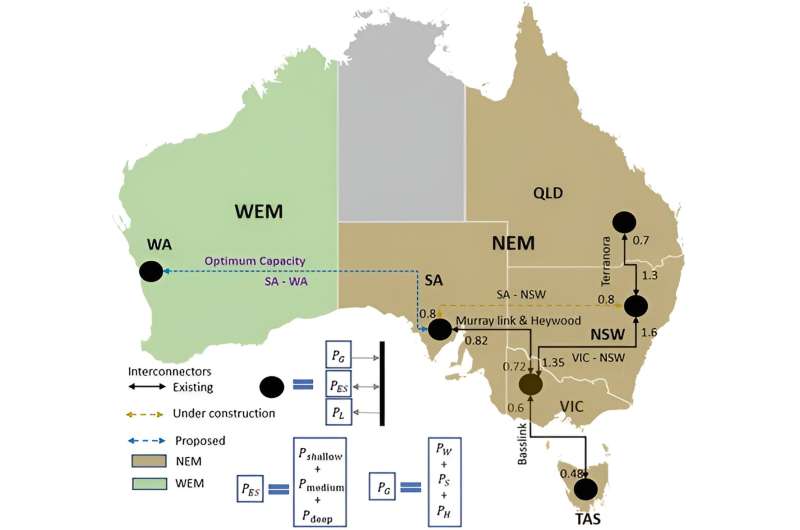This article has been reviewed according to Science X's editorial process and policies. Editors have highlighted the following attributes while ensuring the content's credibility:
fact-checked
peer-reviewed publication
proofread
Charting a cost-efficient path to a renewable energy grid for Australia

A model charts the most cost-efficient path to a fully renewable electricity grid for Australia.
Raheel Ahmed Shaikh and colleagues modeled possible scenarios for Australia's eastern and western grids, using solar and wind generation, short-to-long-term energy storage, and financial input data to explore low-cost capacity mix. Going completely renewable would require significant expansion of both generation and storage.
Interconnecting the two grids would reduce generation capacity needs by 6% and storage power capacity needs by 14%. The least cost renewable-only grid would be dominated by wind, with between 50–75% of energy contributed by turbines.
Storage would be mandatory for any fully renewable grid. Australia would need the ability to store up to four days of demand. That represents 13 times more storage power capacity and over 40 times more storage energy capacity than the country has at present, considering batteries, pumped hydro, and hydrogen storage.
An 82% renewable grid would only require a fourfold increase in storage power capacity and a threefold increase in energy capacity. According to the authors, the optimal route to a fully renewable grid would require an investment of approximately A$130–150 billion, around 8–10% of the country's Gross Domestic Product, assuming future technology development and cost reduction.
The research is published in the journal PNAS Nexus.
More information: Raheel A Shaikh et al, Robust capital cost optimization of generation and multitimescale storage requirements for a 100% renewable Australian electricity grid, PNAS Nexus (2024). DOI: 10.1093/pnasnexus/pgae127


















